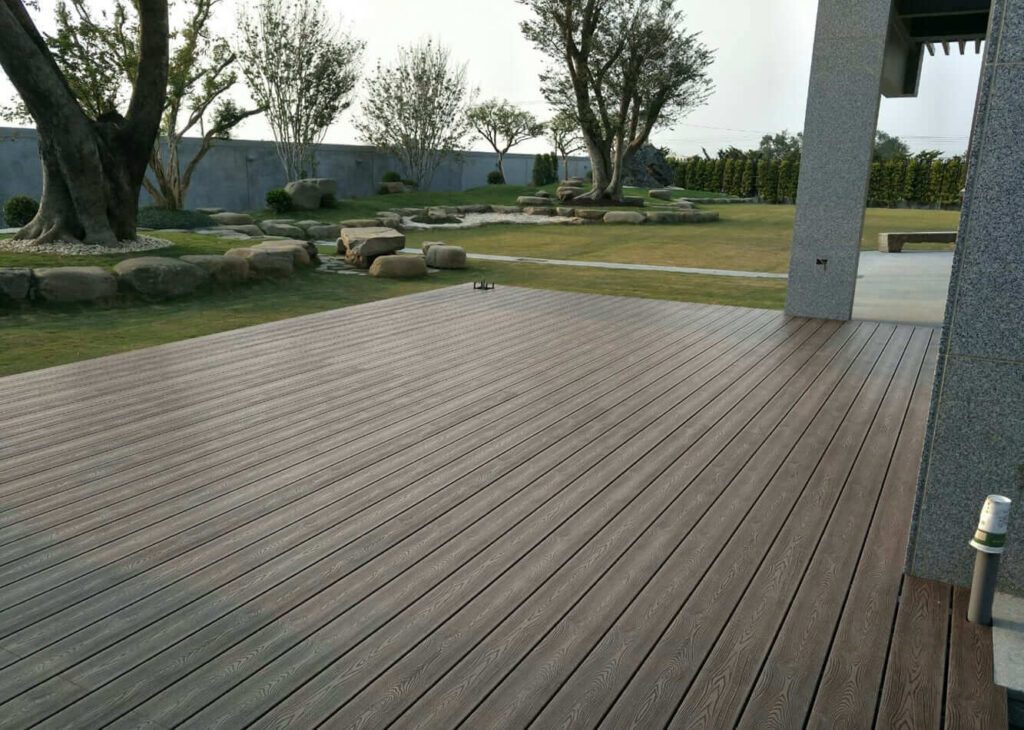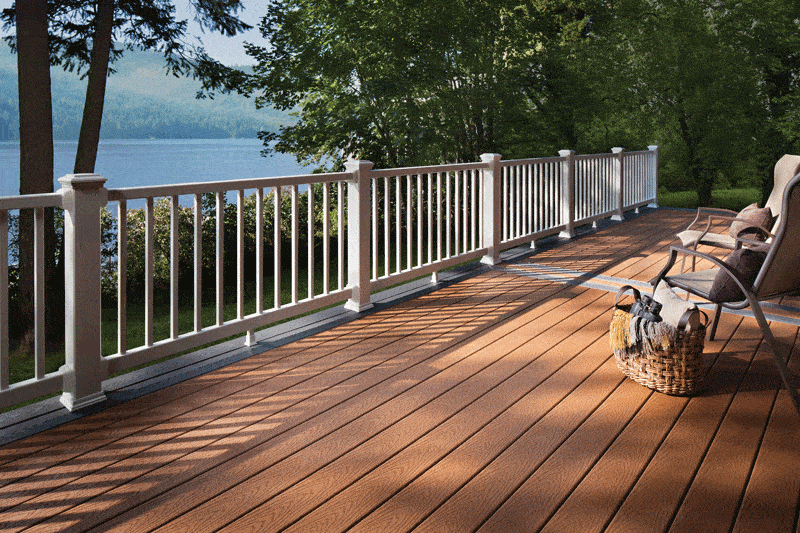Functional Design Analysis of Plastic Wood Decking
With the development of the construction industry, customization of plastic wood decking will become a trend. According to the actual scene needs and to meet the actual functional requirements of the deck, functional and aesthetic modeling rules should be followed when designing the surface shape of the deck. Make the surface design of plastic wood decking more beautiful and practical. Functional and aesthetic modeling principles are used in product design to modularize the surface shape design of plastic wood decking, achieve product serialization, and standardize production, so that plastic wood decking has a broader development space.

Surface shape that is conducive to anti-slip and wear-resistant properties
Garden landscapes are basically outdoor public places with large passenger flow. Wind and rain outdoor environmental factors always test the performance of ground paving materials. Based on the needs of surface modeling, plastic wood decking is also required to have a certain degree of anti-slip and wear resistance. In addition to the physical properties of the material itself, the performance of these properties should also be paid attention to the surface modeling of the deck. In the surface design of landscape plastic wood decking, it is necessary to adopt a concave and convex curved surface to increase the roughness of the deck surface, thereby increasing the friction when the deck contacts the outside world, so as to achieve the purpose of anti-slip.
Surface modeling that facilitates drainage and anti-corrosion properties
Although plastic wood products are moisture-proof, weather-resistant, and aging-resistant, they will also suffer from fatigue and creep under the influence of the outdoor natural environment. These changes will cause the decks strength to decrease and its bending rate to increase. Therefore, the drainage performance of the deck should be considered when designing the surface shape of landscape plastic wood decking in order to increase its anti-corrosion performance.In actual production, flat plastic wood decking is directly fixed on the bracket when used outdoors, and gaps will be reserved as drainage channels during installation;When installing snap-on plastic wood decks, drainage channels should be set up at the snap locations to facilitate disassembly and drainage.

Shape that is conducive to energy saving and environmental protection needs
With the development of society, energy conservation and environmental protection have become an essential production and lifestyle. In the surface design of plastic wood decking, the design that is both beautiful and energy-saving will inevitably become a trend. In the appearance design, under the condition of ensuring the load-bearing performance, in addition to the cavity plastic wood deck, the deck can also be designed in the shape of a solid arched bottom surface. Such a shape can ensure its load-bearing function. , not only can reduce the weight of the plastic wood deck itself and facilitate installation, but also save materials, reduce unnecessary waste, and achieve the purpose of energy conservation and environmental protection.
Surface modeling rules of landscape plastic wood decking based on aesthetic requirements
The principle of aesthetics is the intuitive feeling produced by direct contact between product form and people. Although aesthetics is not the only decisive condition in product form design, it is a necessary factor in product form design. Product appearance design must meet its necessary functional requirements. , should have aesthetic guidance and organization. Aesthetic principles include unity and change, proportion and scale, rhythm and rhythm, etc.Aesthetic principles are applied in the surface design of plastic wood decking to make it aesthetic and artistic, which can improve the artistic effect of the overall environment.According to different scene requirements, there can be different appearance choices and combinations under the same functional requirements.

Proportional and modular surface modeling design
In order to make the surface shape design of plastic wood decking uniform and changeable, the corresponding building module can be applied to its required appearance size.The surface shape of plastic wood decking has a mathematical basis under different size requirements. The use of modulus can fix the proportion of the deck surface shape and make it meet aesthetic standards, thereby establishing serial production.
Surface modeling design in line with morphological bionic design
Biomimicry has a wide range of applications in life, and morphological bionic design mainly studies the external forms and symbolic meanings of natural substances and organisms, and applies them in design through appropriate artistic processing techniques. Bionic design applied to product modeling is divided into three types: concrete form, abstract form and metaphorical form. In the surface modeling design of plastic wood decking, the bionic modeling design can enhance the integration ability of the deck and the environment, making the deck more aesthetically valuable.
